

| Separating Great Oak Beauty and Pale Oak Beauty |
| .............. |
| In Nottinghamshire,
these two large-winged moths are unlikely to be trapped
away from the Sherwood Forest/Clumber Park areas. Pale Oak Beauty has a more scattered Nottinghamshire distribution than Great Oak Beauty and has only been recorded from a handful of sites since 1980. The two are much larger than either Mottled or Willow Beauty and immediately obvious when seen coming in to MV light. Familiarity with Mottled Beauty and Willow Beauty, will almost certainly have been gained, long before either Great Oak Beauty or Pale Oak Beauty are trapped, so any potential identification problems should be narrowed down immediately to the two moths discussed here. |
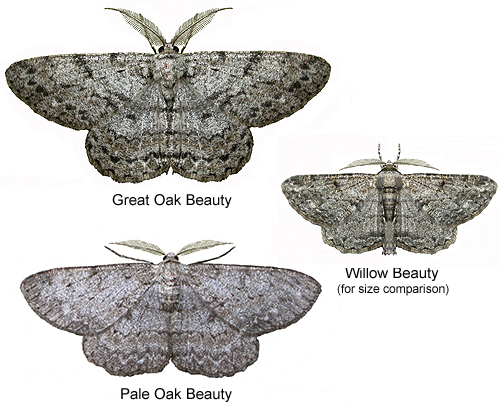 |
|
| 70.267 .... B&F 1943 .... Great Oak
Beauty
Hypomecis
roboraria ([Denis &
Schiffermüller], 1775) |
Nottinghamshire status and distribution: A Nationally scarce B moth in the UK and presently given Grade 1 status in Nottinghamshire. Great Oak Beauty is a moth of the southern counties of the UK, with scattered colonies in Buckinghamshire and Shropshire, where it is found in deciduous woodlands. Nottinghamshire marks the moth's northern-most UK range and it is regular at several Sherwood Forest sites. With an unexpected record from Eakring in 2007 and a recent record from Clumber Park, perhaps this moth is slowly increasing its Nottinghamshire range? Flight period: June to July. The earliest record we have is June 4th 2011. Identification features: This is a large species, much larger than either Mottled or Willow Beauty. The only real confusion species is Pale Oak Beauty. Prominent markings include two cross-lines, running across the centre of the forewing, which merge and thicken on reaching the trailing edge of the forewing and is somewhat reminiscent of Willow Beauty. |
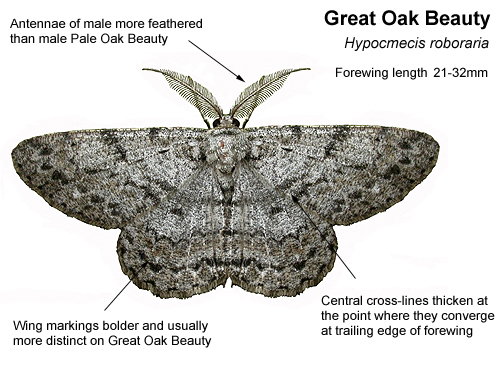 |
|
| .............. | ||
| Situated along (and just in from) the outer edges of both forewings and hindwings, are a series of dark marks/spots, with rows of faint, brown markings and there is a small, slightly elongated dark spot in the centre of the hindwing. On Pale Oak Beauty, this spot is lighter in the centre. | ||
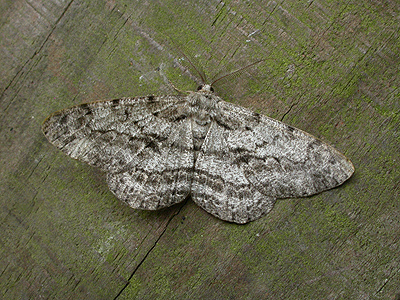 |
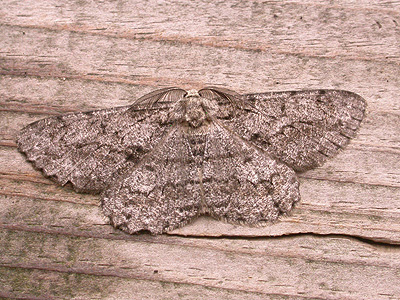 |
|
| 70.268 .... B&F 1944 .... Pale Oak
Beauty
Hypomecis
punctinalis ([Denis &
Schiffermüller], 1775) |
| Nottinghamshire
status and distribution: Pale Oak Beauty is
very rare in Nottinghamshire (Currently Grade 3 status)
and rare in the Midlands area generally. Recent county records have come from Lound Wood, Eakring (three records in 2007) Bunny Old Wood in 2008, Clipstone Old Quarter in 2013 (first Sherwood Forest record) and most recently from the Idle Valley NR in 2014. Prior to these records, there was only one modern Nottinghamshire record, coming from Misterton in the early 1980's. Pale Oak Beauty prefers deciduous woodland, so is unlikely to occur in suburban areas and seems largely confined to the northern-half of Nottinghamshire. Flight period: Flies from late May to mid July. The Nottinghamshire records we mention, fall between May 23rd and July 7th. |
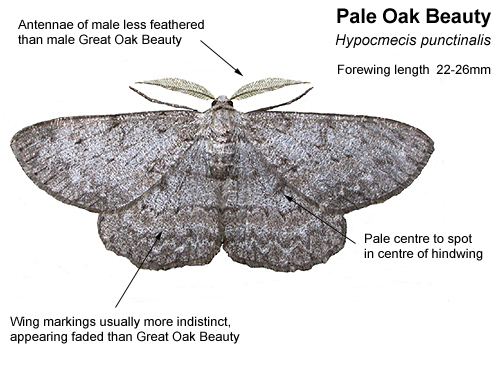 |
|
| .............. | ||
| Identification
features: Pale Oak Beauty is slightly smaller
than Great Oak Beauty (which should initially be
suspected first) and with less feathered antennae on
males. On the few Pale Oak Beauty we have recorded, the
most prominent markings have been a scalloped white line
along the outer-edge of both forewings and hindwings.
This usually runs outside a similar blackish line and is
often more prominent on the hindwings. Most individuals are relatively poorly marked and quite plain, with few distinct features. Well-marked individuals may show two broken cross-lines in the middle of the forewings (often no more than a row of dots), but these are not obvious and do not become thicker when they converge and reach the trailing edge of the forewing. |
||
| .............. | ||
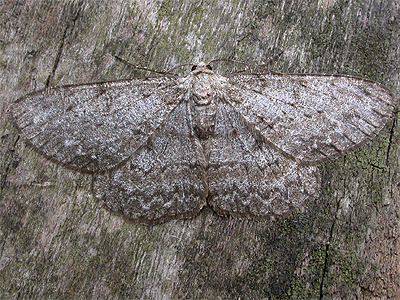 |
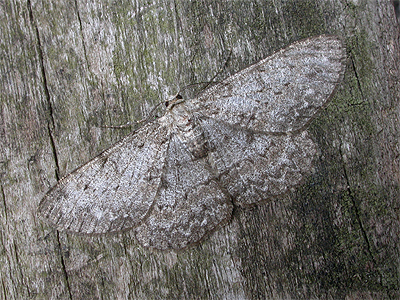 |